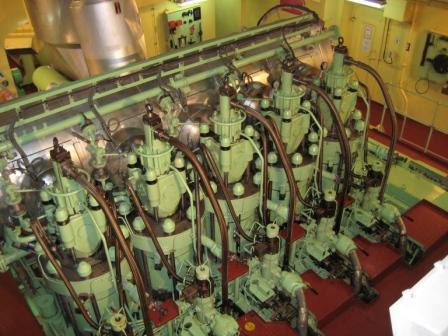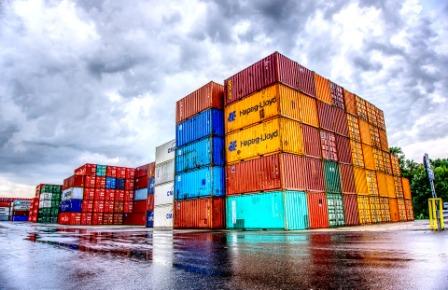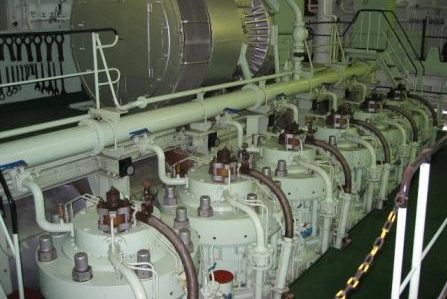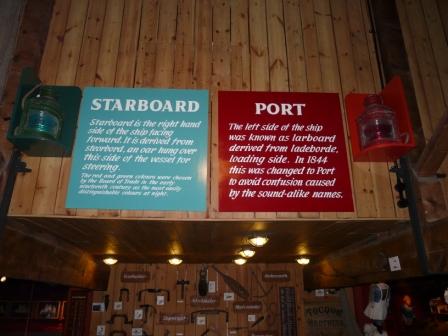In A Diesel Engine Fuel Is Ignited By Injecting It Into Hot, High-Pressure Air In A Combustion Chamber. A Diesel Engine Operates With A Fixed Sequence Of Events, These Events May Be Achieved In One Cycle (I.E. In 2 Strokes Of A Piston) Or In Two Cycles (I.E. In 4 Strokes Of A Piston). A Stroke Is A Travel Of Piston Between Two Extreme Points.
Cycle Of Operations Of A Four Stroke Diesel Engine
TDC: Top Deck Centre,
BDC: Bottom Deck Centre.
- Induction Stroke: During This Stroke, The Piston Travels From TDC To BDC, Drawing In Fresh Air Through Inlet Valve. At BDC, The Inlet Valve Closes.
- Compression Stroke: During This Stroke, The Piston Moves From BDC To Tdc, Compressing The Fresh Air, Thus Raising Its Temperature.
- Power Stroke: When The Piston Reaches Tdc, Fuel Is Injected. Due To The Presence Of Hot Compressed Air, Compression Takes Place, Thus Producing High-Pressure Gases. Because Of The High-Pressure Gases, The piston Is Forced To BDC, Thus This Stroke Is Known As The Power Stroke.
- Exhaust Stroke: The Exhaust Valve Opens As The Piston Reaches Bdc. Exhausting Of The Gases Takes Place When The Piston Travels From BDC To TDC. This Stroke Is The Last Stroke Of The Cycle.
Cycle Of Operation Of A Two Stroke Engine
- Compression And Firing: When The Piston Moves Up, Exhaust And Scavenge Ports Are Covered And The Fuel Valve Is Shut. Air Which Had Previously Been Drawn Is Now Compressed. This Is Called Compression Stroke. Next, The Fuel Oil Is Injected Into The System, Due To The Presence Of Hot Air, Combustion Takes Place And High-Pressure Gases Are Produced Thus Pushing The Piston Downwards, This Is Called Power Stroke.
- Exhausting And Scavenging: As The Piston Moves Downward, Exhaust Ports Start To Uncover, The Exhaust Gases Are Blown Out By There Own Pressure. The Piston Continues To Move Downward And The Scavenge Port Starts To Uncover. Pressurised Air Is Blown In, First To Clear The Left Over Exhaust Gases And Then To Provide Fresh Air For The Next Compression Stroke.
Scavenging
It Is The Process Of Introducing Fresh Air Into The Liner For Combustion And Removing The Exhaust Gases.
Types Of Scavenging:
- Cross: In This Type Of Scavenging The Exhaust Ports Are Uncovered First, From Here The Exhaust Gases Are Blown Out Under Pressure And Then The Scavenge Air Inlet Ports Are Uncovered Which Are On The Other Side Of The Exhaust Ports. The Fresh Air Inlet Further Pushes Out The Leftover Exhaust Gases.
- Loop: In This Type Of Scavenging The Exhaust Ports Are Uncovered First, From Here The Exhaust Gases Are Blown Out Under Pressure And Then The Scavenge Air Inlet Ports Are Uncovered Which Are On The Same Side As The Exhaust Ports. The Fresh Air Inlet Further Pushes Out The Leftover Exhaust Gases.
- Uniflow: In This Type, The Exhaust Ports Are On The Top Of The Liner, These Are Opened By A Cam Mechanism, The Exhaust Gases Are Blown Down Under Own Pressure. After This The Scavenge Air Inlet Ports Are Uncovered, These Are Situated At The Bottom Of The Liner, The Incoming Air Further Pushes Out The Exhaust Gases, Whereby A Uniflow Scavenge Is Created.
Supercharging
In Order To Burn A Larger Mass Of Fuel In The Cylinder, A Larger Mass Of Air Has To Be Supplied. This Is Done By Supplying Air Under Pressure. Thus By Increasing The Pressure Of Scavenge Air In A 2-Stroke Engine During The Induction Stroke A Greater Amount Of Air Can Be Introduced As Compared To Natural Intake From Atmosphere. This Process Of Supplying High-Pressure Scavenge Air Is Called Supercharging And This Is Achieved By Employing Turbo-Chargers.
Fresh Water Cooling System
- Cooling Of Engine Is Required To Enable The Engine Metal To Retain Their Mechanical Properties.
- Fresh Water Is Used For Cooling The Engine, This Is Also Known As Jacket Cooling Water.
- Seawater Is Not Used Due To Its Corrosive Action And Also Because Of Its Scale Forming Property In Narrow Cooling Passages.
- Sometimes Lubricating Oil Is Also Used For Piston Cooling As Leaks Into The Crankcase Would Not Cause Problems.
- The Jacket Cooling Water has Circulated Around, Through Internal Passages Within The Engine, This Jacket Water Gets Heated Up And Is Thus Cooled Down Using Sea-Water.




